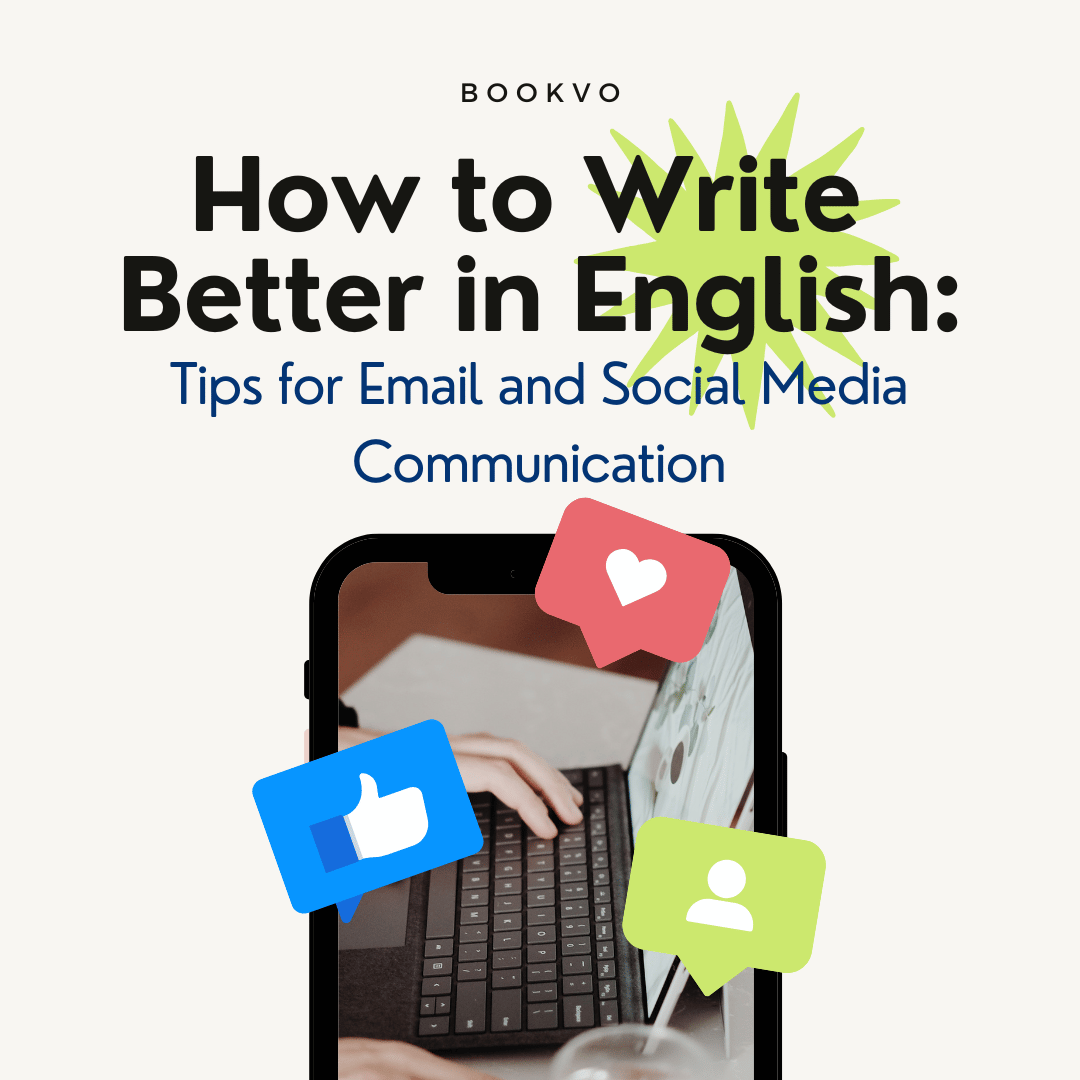Enhancing your English writing skills for emails and social media posts can improve the way you connect with readers and present yourself professionally. Here are effective strategies, complete with examples, to help you write with clarity, engagement, and style.
1. Know Your Audience
Tailor your writing style to the platform and audience. For instance:
- Emails: Use a polite, professional tone.
- Example: “Dear Ms. Chen, I hope this message finds you well. I am writing to provide updates on our recent project milestones.”
- Social Media: Vary your tone based on the platform. For LinkedIn, keep it professional. For Instagram or Twitter, feel free to be more conversational.
- Example for LinkedIn: “Excited to share our team’s latest accomplishment! We just hit a major project milestone. #TeamSuccess”
- Example for Instagram: “Celebrating all the hard work! 🌟 Proud of what we’ve achieved together! #TeamworkMakesTheDreamWork”
2. Keep It Clear and Concise
Avoid long, complex sentences. Present your main points quickly, especially for online readers.
- Email Example:
- Instead of: “I wanted to take this opportunity to inform you that the meeting that was initially planned for tomorrow will now be rescheduled to next week due to unforeseen circumstances.”
- Use: “The meeting scheduled for tomorrow has been moved to next week due to unforeseen circumstances.”
- Social Media Example:
- Instead of: “Our company is excited to announce a brand new line of eco-friendly products that we believe will revolutionize the market.”
- Use: “Excited to introduce our new eco-friendly product line! 🌱 Making sustainable choices easier for everyone.”
Read our other articles:
How to Build a Book Review Habit
3. Use Simple Language
Clear, straightforward language makes your writing accessible to a broader audience.
- Email Example:
- Instead of: “Our team has synthesized the latest market data to extrapolate potential growth trajectories.”
- Use: “Our team analyzed recent market data to predict growth trends.”
- Social Media Example:
- Instead of: “Commencing our campaign to elevate awareness regarding climate change impacts.”
- Use: “We’re starting a campaign to raise awareness about climate change. 🌍 Join us!”
4. Proofread Carefully
Even minor errors can impact how professionally your writing is perceived. Before sending, use tools like Grammarly or Hemingway and double-check for typos. For example:
- Email: “Thank you for reaching out, and I hope to here from you soon.”
- Corrected: “Thank you for reaching out, and I hope to hear from you soon.”
- Social Media: “We’re exited to announce our newest feature!”
- Corrected: “We’re excited to announce our newest feature!”
5. Structure Your Writing
Organize your emails and social media posts for easy reading. Break down content into sections:
- Email Structure Example:
- Introduction: “Hi [Name], I wanted to reach out with some updates on the upcoming project.”
- Body: Briefly outline each update with bullet points.
- Conclusion: “Looking forward to hearing your thoughts. Let me know if you need more details.”
- Social Media Structure Example:
- Hook: Start with an interesting question or bold statement.
- Content: Add the main message.
- Call to Action: Encourage engagement, like “Comment below!” or “Let us know what you think.”
6. Use a Call to Action (CTA)
Encouraging readers to take action makes your message more interactive:
- Email CTA Examples:
- “Please let me know if you’d like more details on this.”
- “Could we schedule a time to discuss further?”
- Social Media CTA Examples:
- “Comment below with your thoughts!”
- “Swipe up to learn more!”
- “Share this post with friends who might find it helpful.”
7. Personalize When Possible
Adding a personal touch can make your writing more engaging:
- Email Example: “Hi [Recipient’s Name], I remember our conversation about expanding to new markets. I wanted to share some recent insights that might be useful.”
- Social Media Example: Addressing your audience directly: “Tag a friend who would love this!” or “To everyone who joined our live session yesterday—thank you!”
8. Be Mindful of Tone
Your tone will vary by platform and audience:
- Professional Email Example: “Dear Dr. Evans, I appreciate the opportunity to discuss our upcoming project. I look forward to collaborating with you.”
- Friendly Social Media Example: “Can’t wait to share what we’ve been working on! Stay tuned for more updates.”
9. Use Visuals (for Social Media)
Visuals boost engagement, especially on image-heavy platforms like Instagram. Include images, infographics, or short videos to convey information quickly.
- Example: For a post about new products, include an image of the product, or for a tip, use a colorful graphic with the key point displayed.
10. Learn from Native Speakers
Find accounts or writers you admire and observe their style. What words do they use? How do they structure their posts or emails? This exposure helps you develop a natural flow in your writing.
Final Thoughts
Mastering English writing for emails and social media takes practice, but by applying these tips, you’ll enhance your communication, clarity, and engagement. Remember, simplicity, structure, and a touch of personality can turn any message into a more compelling read. Happy writing!
Download Bookvo Now!










